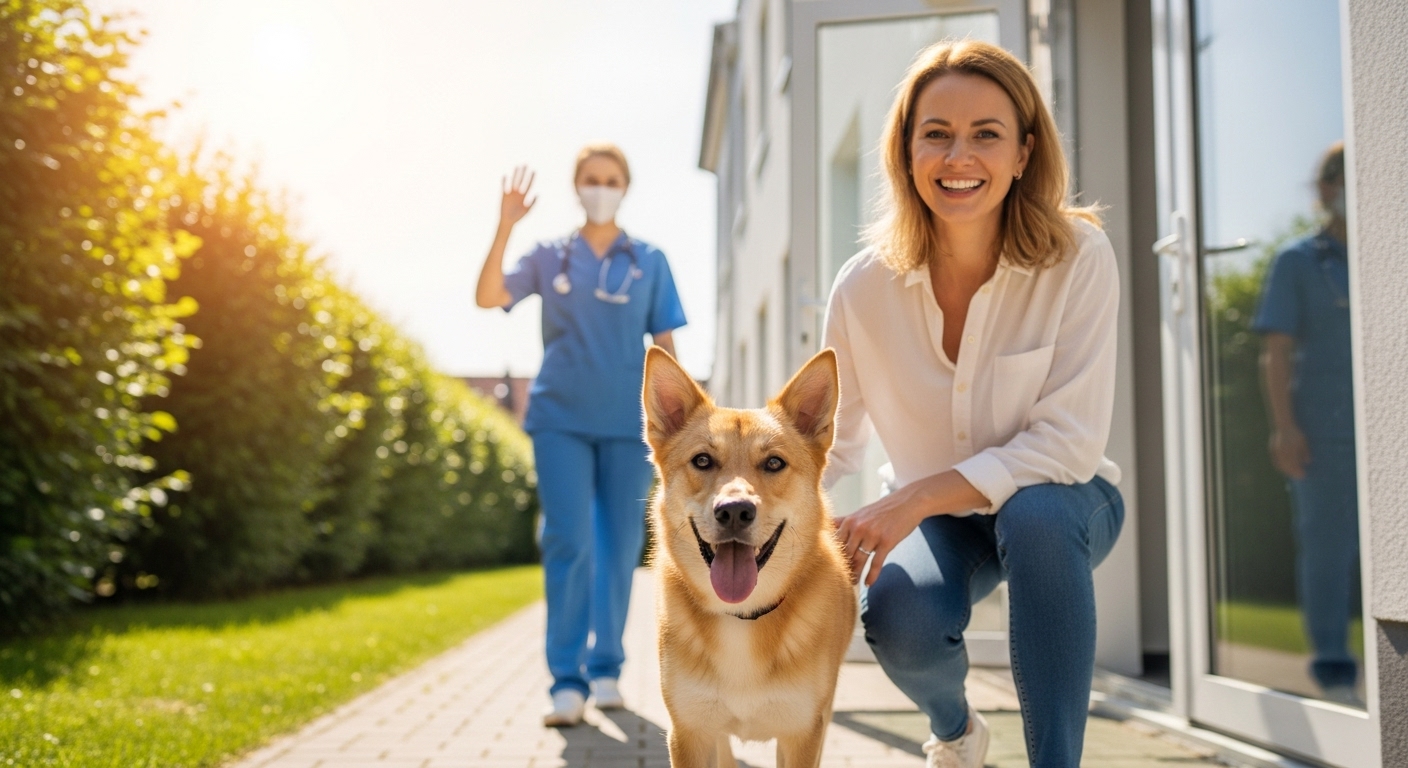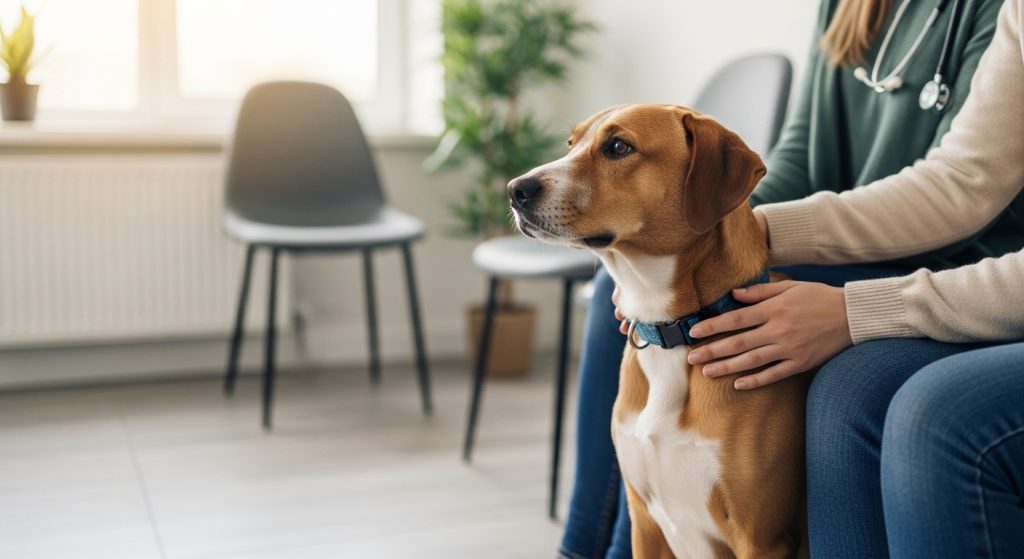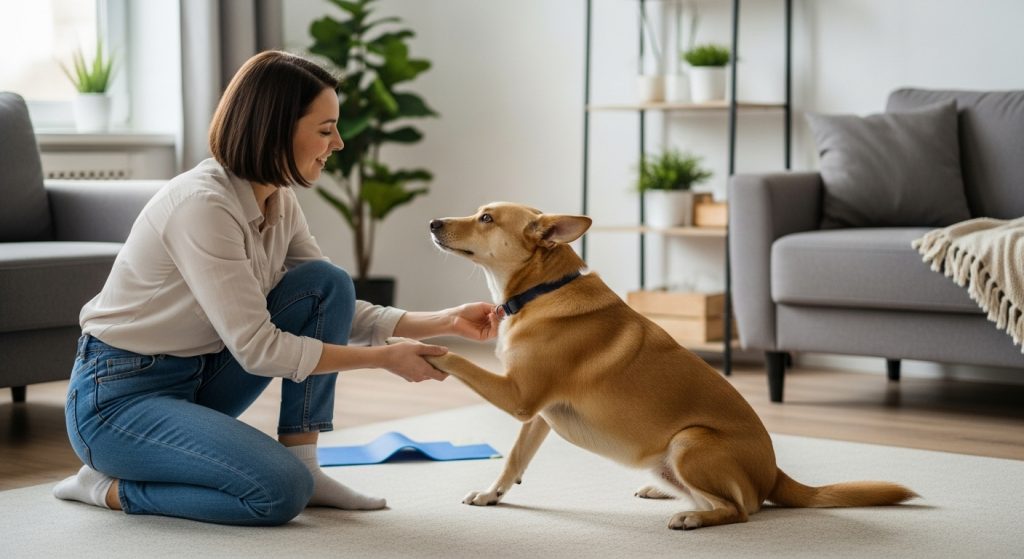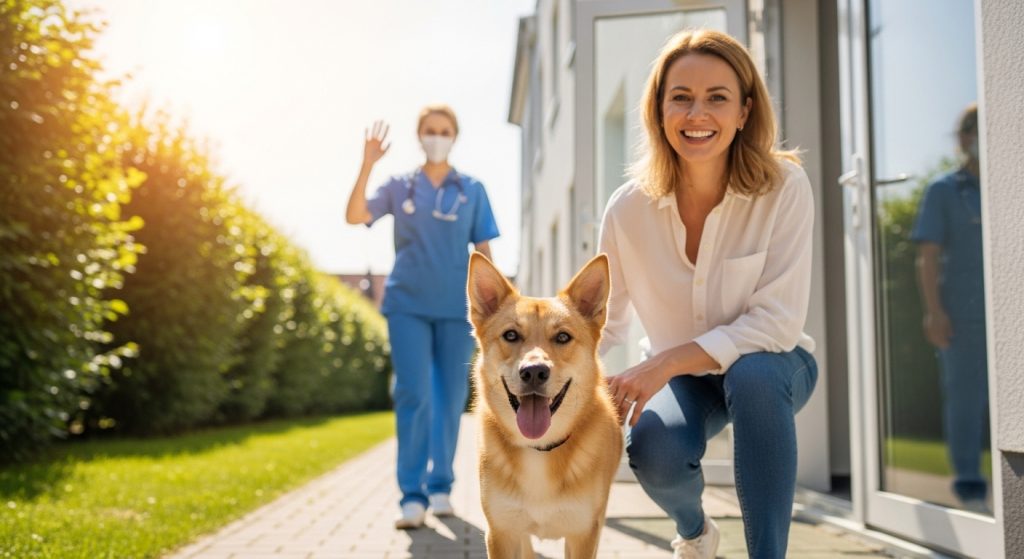Regular vet visits are essential to your dog’s health — but for many pets, they’re a source of fear, shaking, and anxiety. The good news? You can train your dog to stay calm and even enjoy these visits with a bit of preparation and patience.
In this article, you’ll learn how to reduce dog vet visit stress using positive reinforcement, proper desensitization, and smart at-home training. We’ll also share how to make the vet’s office feel like a safe space.
Understanding Why Dogs Get Stressed at the Vet
Most dogs don’t hate the vet — they hate the unfamiliar sounds, smells, and handling. The stress begins even before you reach the clinic: the car ride, the waiting room, or the sight of other nervous animals can trigger anxiety.
Common signs of vet-related stress include:
-
Heavy panting or drooling
-
Trembling or hiding behind the owner
-
Whining, barking, or growling
-
Pacing or trying to escape
-
Refusing treats or showing a tucked tail
To help your dog, first recognize their stress signals and remain calm yourself. Dogs often mirror your energy — if you’re nervous, they’ll be nervous too.
What causes vet stress?
-
Negative past experiences: Painful shots or rough handling.
-
Sensory overload: Strong disinfectant smells, other pets, loud noises.
-
Separation anxiety: Being taken away for exams or blood draws.
-
Lack of socialization: Unfamiliar people and spaces can be intimidating.
Training and Conditioning Before the Vet Visit
Preparation starts at home. Your goal is to desensitize your dog to vet-like experiences through gradual exposure and positive rewards.
1. Practice gentle handling
At home, touch your dog’s paws, ears, mouth, and tail gently while giving treats. This simulates vet exams and teaches your dog that being touched means something good.
2. Simulate vet visits
Pretend you’re the vet — check your dog’s heartbeat with your hand, lift their lip, or open their mouth. Then reward calm behavior. Repeat short sessions daily for best results.
3. Use car-ride training
If your dog associates the car with stress, practice calm, short rides that end at fun places (like the park). Gradually include drives to the vet’s parking lot — without entering — followed by playtime or treats.
4. Introduce the vet staff early
Many clinics allow “happy visits,” where you bring your dog just to meet the staff, get a treat, and leave. These positive experiences can drastically reduce vet anxiety later.
5. Prepare calming aids
Natural remedies like dog-calming pheromones, anxiety vests, or calming chews can make a huge difference. Consult your vet before using supplements or medications.
The Day of the Vet Visit — Staying Calm and Positive
On the day of the appointment, stay relaxed and stick to your dog’s normal routine. Dogs thrive on consistency, and a stress-free morning can set the tone for a smooth visit.
Before leaving home:
-
Give your dog a light meal (avoid going on an empty or full stomach).
-
Take a short walk to release extra energy.
-
Bring your dog’s favorite toy, blanket, or treats.
During the visit:
-
Use slow movements and calm speech.
-
Offer treats for calm behavior in the waiting area.
-
Keep your dog close — small dogs can feel safer in your arms or carrier.
-
Allow the vet to approach slowly; never force interaction.
If your dog becomes too anxious, ask the vet to pause. Modern veterinarians are trained in fear-free techniques, meaning they use gentle, positive handling to reduce stress.
After the visit:
Always end on a positive note! Go for a walk, play fetch, or offer a favorite snack. Rewarding calm behavior helps your dog remember that vet visits are followed by good things.
Turning Stress into Confidence
Preparing your dog for vet visits doesn’t happen overnight — but with patience, repetition, and love, it’s entirely possible. The goal isn’t to make your dog “love” the vet instantly but to build trust and predictability so they feel safe and understood.
By reducing dog vet visit stress through consistent positive experiences, you’ll make every trip smoother and strengthen your bond along the way. Remember, calm owners create calm dogs — and that’s the secret to every happy vet visit.




